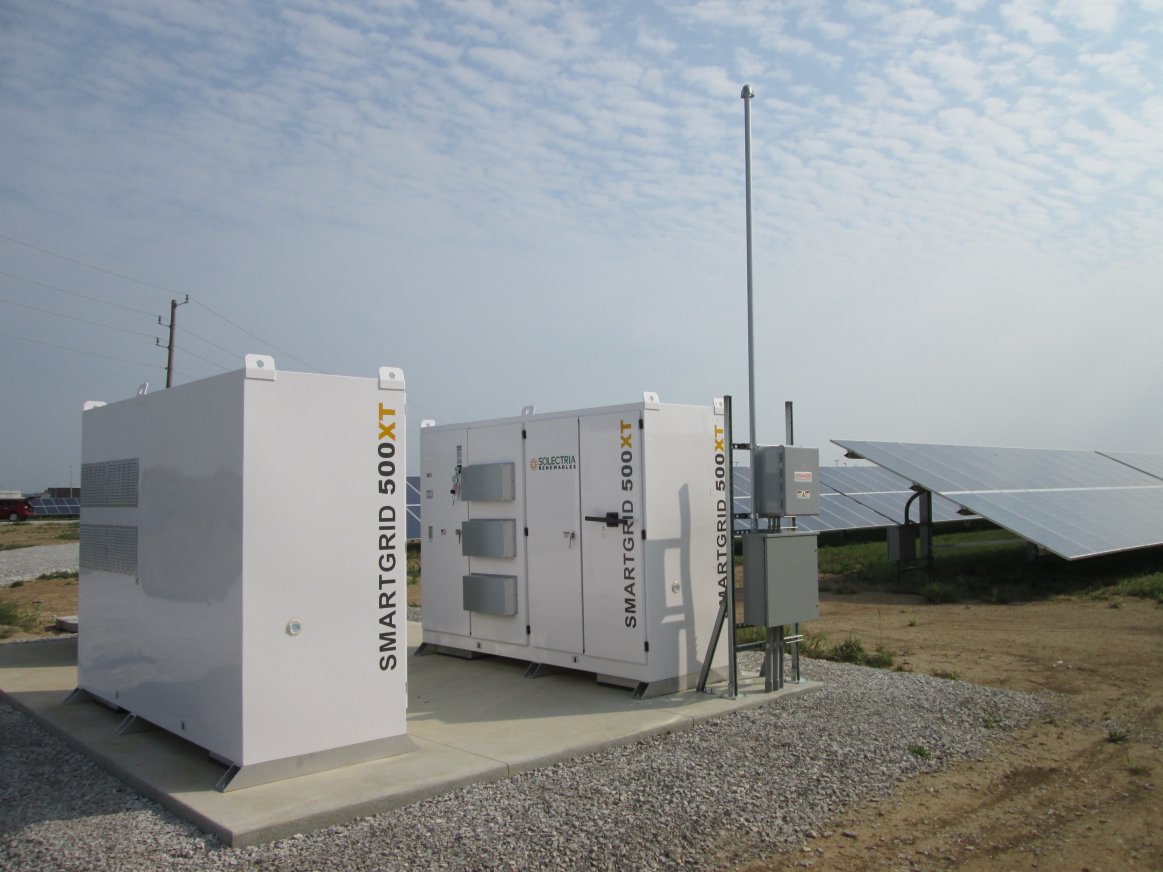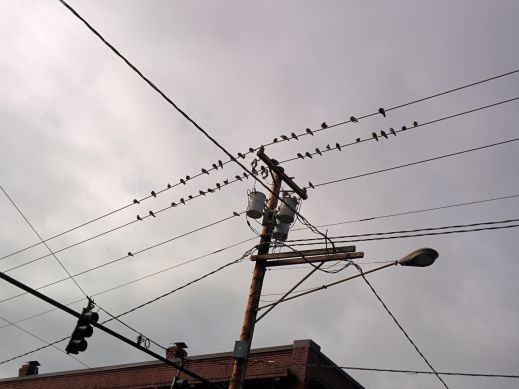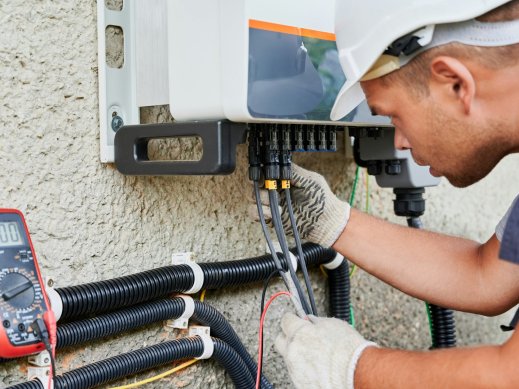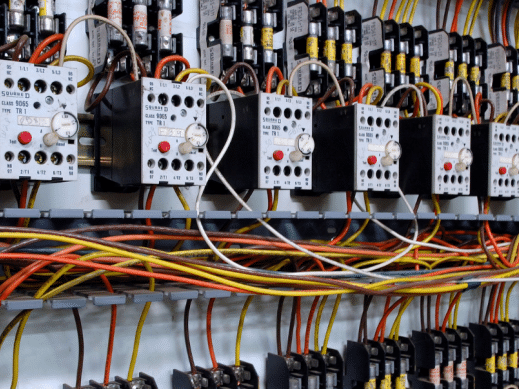

I want to use lugs with a termination rating of 90°C. Why doesn't Solectria offer them?
Even though our terminals are listed for 75°C, it is acceptable to use 90°C wire. NEC 110.14(C)(1) is the governing clause for this rule. A good resource to learn more on this topic is available in a white paper from Schneider / SquareD: Wire Temperature Ratings and Terminations. If we listed our terminals to 90°C then we would have to specify the exact conductor size, rating, and insulation type for each lug. This limits flexibility in system design and installation.
--Eevery 19:04, 11 January 2013 (UTC)
Do I need a neutral?
The SGI 225-500, SGI 500PE, and PVI 50-100kW inverters are designed to operate with or without a neutral conductor. There is no performance benefit if a neutral is connected. It is required to install a neutral if the interconnection agreement with the utility specifies a 4 wire device, or a solidly grounded installation. If the utility doesn’t mention something like this and there are no requirements in local code, then you are welcome to run the inverter as a 3-wire device.
--Eevery 16:46, 11 January 2013 (UTC)
May I connect my inverter to a delta service?
The SGI 225-500, SGI 500PE, and PVI 50-100kW inverters all include internal isolation transformers. You may install your inverter to either a delta or wye winding without issue.
NOTE: PV Powered inverters require connecting there inverters facing the grounded wye winding since with a delta transformer the phase voltages are not stable with respect to ground. This causes their inverters to intermittently trip on high and low phase voltages.
--Eevery 14:54, 23 January 2013 (UTC)
Can Solectria supply larger lugs, may I add my own?
Since the lugs that come factory installed in the inverter are the only lugs that have been type tested and listed for your inverter, we do not have other lugs available. If the customer's large conductor size compensates for voltage drop and not carry ampacity, it’s pretty straightforward to adapt in the field. A lot of customers might use a splicer reducer or an insulated terminal block with a short section of smaller wire. Termination pins at the end of the conductor that fit into the provided lug also work well.
--Eevery 16:46, 11 January 2013 (UTC)
Can I install protective relays, communications equipment, or other electronics inside the inverter?
Please locate auxiliary loads on a different circuit than the inverter. The inverter is not listed to be used as an electronics enclosure. Please install all protective relays, communications equipment, and other electronics outside the inverter. Please do not power external devices with the internal 24VDC supply. The inverters are not listed be installed this way. Powering additional devices with the internal supply has been known to interfere with normal inverter operation and may void your warranty.
--Eevery 16:46, 11 January 2013 (UTC)
Regarding wire size, what is the difference between kcmil and MCM?
They mean the same thing and are often used interchangeably. kcmil=MCM=thousand circular mils.
--Eevery 18:51, 11 January 2013 (UTC)
What is the sound intensity of the SGI?
For an SGI 500, the sound pressure level measured with type A weighting (dBA) is < 68dBA at 1m, < 60dBA at 5m, < 57dBA at 10m. Type A weighting is most representative of the hearing sensitivity in humans.
--Eevery 18:57, 11 January 2013 (UTC)
Does my inverter have ground fault protection (GFDI, GFP)?
All Solectria inverters come with DC ground fault protection as required per UL 1741. DC ground fault protection will shut down the inverter should the current between the grounded conductor bus and the ground bus exceed the allowable setting and trip the protective element.
|
DC Ground Fault Protection |
|
|
Inverter |
DC Current |
|
PVI 1800/2500 |
1A Fuse |
|
PVI 3800-7600TL |
250mA |
|
PVI 14/20TL |
250mA |
|
PVI 23/28TL |
250mA |
|
PVI 50-100KW |
2A fuse |
|
SGI 225, SGI 250 |
4A breaker trip |
|
SGI 266, SGI 300, SGI 500 |
5A breaker trip |
|
SGI 500XT |
5A breaker trip |
Per UL 1741 nominal, “ultimately trips” 150%, < 2 seconds 250%, < 1second
I need to create PVsyst models for Solectria's SGI inverters. Can you send me the files?
The PVsyst models for SGI inverters are available on the Downloads page of our website. http://www.solren.com/ond/
--Eevery 20:35, 16 January 2012 (UTC)
What is the SolrenView server I.P. address and what ports should I allow on my firewall?
209.61.226.29 ports 49163-49169
Early (obsolete) SolrenView firmware uses 74.208.133.229 ports 49161-49162 or 74.208.71.243 ports 1234-1236
--Eevery 21:02, 14 January 2013 (UTC)
What is the bandwidth required for Solrenview?
Approximately 100kB per day
--Eevery 22:02, 10 March 2014 (UTC)
May I add wire length extensions to the solrenview weather station temperature sensor?
By adding an additional 100 feet of 24 AWG copper extension lead wire to the solrenview weather station thermistor probe, the accuracy will be affected insignificantly…about 0.01 degrees Celsius.
--Eevery 21:12, 27 February 2013 (UTC)
Will your inverters work with high leg delta service (aka wild leg, red leg, stinger leg or bastard leg)?
Excluding the XT, all of 3 phase inverters are designed to operate with 240 high leg delta service, and 480 high leg delta service. When installing inverters on high leg delta circuit, only terminate the 3 major phase conductors at the inverter. Do not terminate the center tap "neutral" at any connection point on the inverter. Even though the inverter has a WYE output, the center is ungrounded and is compatible with high leg delta service when installed as a 3 wire device.
--Eevery 19:41, 11 January 2013 (UTC)
Why do I need multiple low voltage windings for the XT?
If the two inverters are on the same transformer winding, one inverter can feed current into the other inverter and cause significant damage. Also, the high frequency switching noise can interfere with how the inverter senses grid voltage. Using a transformer wound in a low-high-low configuration provides sufficient isolation between the two inverters. Using electrostatic shielding prevents the high frequency noise from being passed through the transformer into another inverter.
One of the projects we are working on is setting up communications between multiple inverters to synchronize them in hopes that this will eliminate the need for multiple winding transformers. There’s a couple years of development that needs to go into this before it becomes commercially available.
If you have inverters that have an internal isolation transformer, you can connect as many of these inverters to a single transformer winding as you like.
--Eevery 21:23, 16 August 2013 (UTC)
Are Solectria three phase inverters line commutated or forced commutated?
The Solectria three phase inverters are not line commutated because we do not switch at line frequency. The closest answer would be forced-commutated since no line voltage is required to turn the IGBTs on or off. These two terms really apply to older thermistor based machines. The best descriptor of our control method is space vector modulation.
--Eevery 21:14, 27 February 2013 (UTC)
What is the Short Circuit Ratio (SCR)?
The short circuit ratio is a measure of how much power is availible in the event of a fault. It is typically used for designing protection schemes. The SCR of our inverters is 120% of the inverter rating (in VA as opposed to W). For example, the short circuit ratio of SGI500 is 500 x 120% = 600KVA and that of PVI95kW is 95 x 120% = 114kVA.
- The inverter cannot generate much higher power than its nameplate rating for several cycles as it does not have an inertia and the protection will disable it almost instantaneously.
- With the fast VAR support, our inverter will generate 120% of the rated current for maximum of one minute (if this mode is enabled).
--Eevery 17:24, 16 January 2012 (UTC)
What happens when I mix different modules on the same inverter?
We have a few customers with some modules left over from 1603 “safe harbor” and it is not uncommon to mix different module power ratings on the same inverter. Typically what I recommend is to find modules with the same cell chemistry and same cell count with similar power levels, open circuit voltage, and temperature coefficients. Unfortunately, we do not have significant data to quantify the losses. The more similar modules are, the less likely you are to notice a difference in energy production. With dissimilar modules, the inverter will still track the maximum power point, but it tracks the maximum point of the whole array. We are involved in projects with mixed modules that have turned on recently and the inverters are operating normally.
--Eevery 20:26, 9 October 2013 (UTC)
I have concerns about radio interference
Our SGI 225-500 inverters are certified as FCC Part 15, Subpart B, Class A digital devices. This standard restricts the radiated emissions of the inverter to provide a reasonable level of protection against interference when installed in accordance with the user manual and local code. Here is an excerpt of the FCC Part 15 standard that applies to the radiated emissions requirements for which we comply:
Section 15.109 Radiated emission limits. (b) The field strength of radiated emissions from a Class A digital device, as determined at a distance of 10 meters, shall not exceed the following:
|
Frequency of Emission (MHz) |
Field Strength (microvolts/meter) |
|
30 - 88 |
90 |
|
88 - 216 |
150 |
|
216 - 960 |
210 |
|
Above 960 |
300 |
--Eevery 14:24, 18 April 2014 (UTC)



